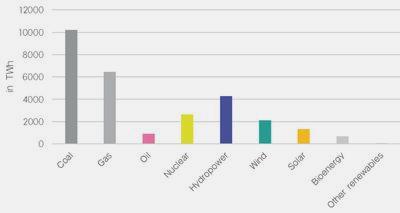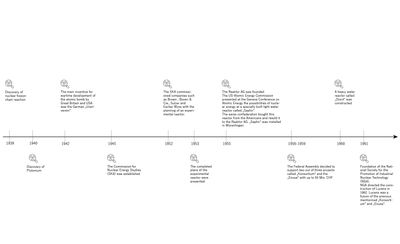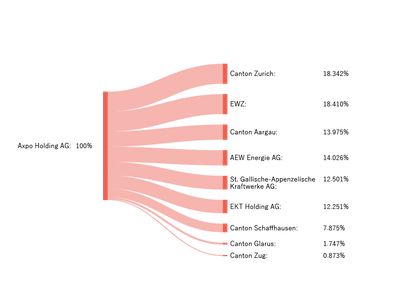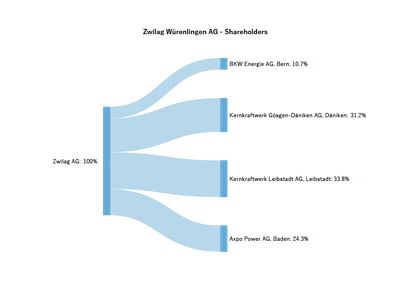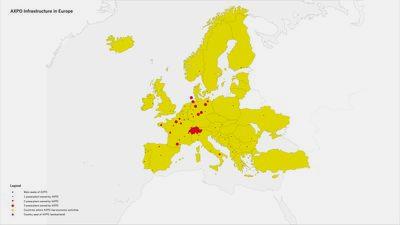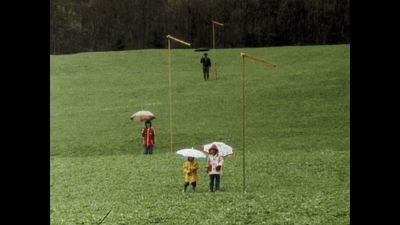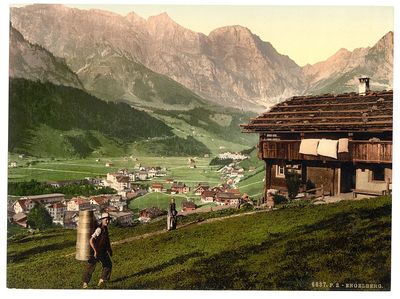AtlasNuclear and AxpoEeva Rosenqvist, Tabea Brochier, and Andrei Zündel
Today, the concrete cooling towers of nuclear power plants seamlessly blend into our landscape, yet seventy years ago, such facilities did not exist. It is therefore essential to understand the rapid development of this industry. Originally conceived for military applications through the Manhattan Project, nuclear energy has since evolved to encompass electricity generation for civilian purposes. The inception of commercial nuclear power began with the inauguration of “Calder Hall” in England in 1957, marking the beginning of a global trend that extended across Europe and America. Today, nuclear energy is harnessed by 32 countries, constituting approximately 10 % of the world’s electricity production.
The Atom: A Global Energy Source

Status of nuclear power plants worldwide.
- Countries with nuclear power plants
- Number of active nuclear power plants.
- Number of power plants under construction
- Number of decommissioned power plants

Status of nuclear power plants in Europe.
- Number of active nuclear power plants
- Number of nuclear power plants under construction
- Number of decommissioned nuclear power plants
- EU countries
- Countries that have nuclear power plants

Locations of nuclear power plants in Europe.
- Active nuclear power plants
- Nuclear power plants under construction
- Decommissioned nuclear power plants
- EU countries
- Countries that have nuclear power plants
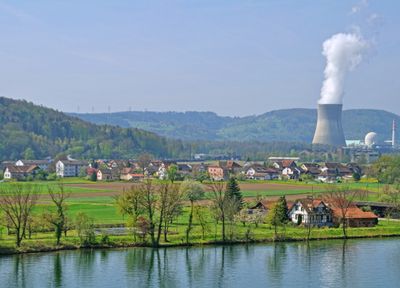
Nuclear Energy in Switzerland
In Switzerland, the nuclear industry comprises four operational power plants, namely Beznau I & II, Gösgen, and Leibstadt, contributing significantly to the country’s energy mix.


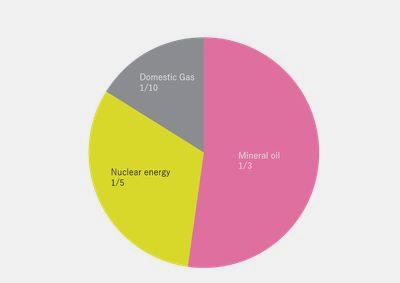

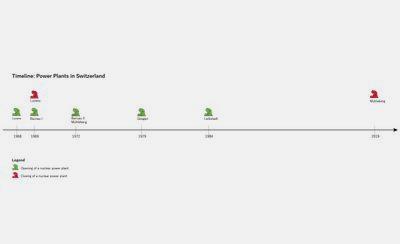
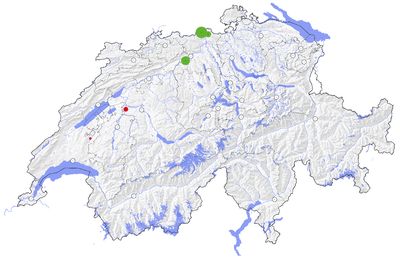
NUCLEAR POWER PLANTS IN SWITZERLAND
Active: Beznau I and II: 1130 MW; Gösgen: 3002 MW; Leibstadt: 3600 MW
Decommisioned: Mühleberg: 1097 MW; Lucens: 30 MW
- Active nuclear power plants
- Decommissioned nuclear power plants
- Capital cities of Cantons
- Water
A Complex Logistic: Uranium from the Mine to the Repository
Although nuclear energy demands relatively small quantities of raw materials, the process of extracting and supplying uranium involves a complex infrastructure. Initially, uranium is sourced from large open mines predominantly situated in regions like Kazakhstan, Australia, and Canada. For every ton of uranium ore extracted, only 1 kilogram of pure uranium can be obtained. Subsequently, this uranium undergoes transportation to enrichment facilities, where the concentration of U-235 is artificially increased from 1% to 90%.
Once enriched, the nuclear fuel is distributed for utilization, and in some cases, subjected to recycling processes. However, the resultant nuclear wastes have various levels of radioactivity, necessitating diverse storage solutions. Presently, no country possesses an infrastructure for the permanent storage of High-Level Radioactive Waste. In response to this challenge, Switzerland has outlined plans to construct a deep geological repository by the year 2032.
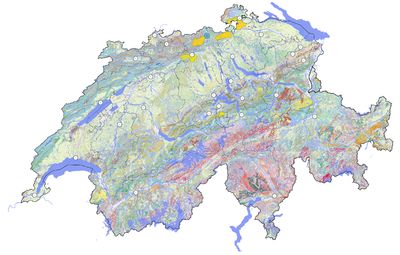
MAP OF DIFFERENT TYPES OF REPOSITORIES IN SWITZERLAND.
- Deep repository for low and intermediate (preliminary evaluation, remains as a reserve option)
- Deep repository for high-level radioactive waste (interim result, further clarification required)
- Zwilag repository for low-level radioactive waste (existing)
- Capital cities of Cantons
- Water
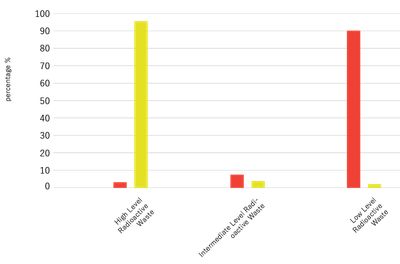
Nuclear waste statistics.
- Total volume of nuclear waste in percentage
- Contributing radioactivity in percentage
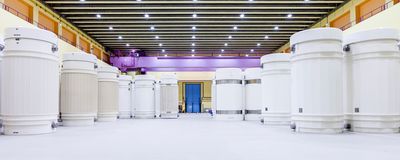
Source: Zwilag AG.
What Are the Risks?
High-profile incidents such as the Chernobyl disaster in 1986 and the Fukushima Daiichi disaster in 2011 have highlighted the catastrophic consequences of nuclear accidents, leading to heightened concerns about safety. If a swiss nuclear reactor were to have a serious accident, the potential radioactive cloud could result in the death of 25,000 people caused mainly by cancer and heart problems. Around 20 million people could be at risk of radiation exposure, requiring them to temporarily leave their homes. Additionally, the long-term impact involves the release of radioactive caesium, a harmful metal, into forest ecosystems, causing contamination for centuries.
This raises important questions about the future we want to leave for the next generations. Do we want to risk creating a radioactive wasteland as their legacy? Is the ten percent of our energy mix provided by nuclear energy worth taking such risks? And who gets to make decisions about these risks?
Possible Radioactive Clouds
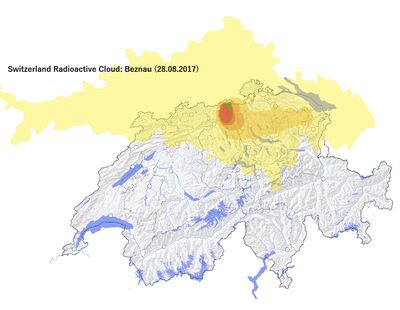
BEZNAU

LEIBSTADT
- 100 mSv/year: area is unhabitable for several centuries
- 50 mSv/year: area should be evacuated
- 20 mSv/year: area is habitable under certain conditions
- 6 mSv/year: area releases radioactivity slightly above the recommendation of 4 mSv/year
- 1 mSv: area is safe to habit
- Capital cities of Cantons
- Water bodies
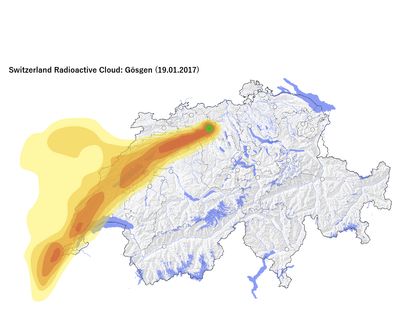
GÖSGEN
Who Owns Nuclear Energy?
Nuclear energy is integrated within a large corporate and governmental framework that holds significant sway over the industry’s future trajectory. AXPO, one of the leading firms of electricity production in Switzerland, also has a grasp on a large European market, with economic activities in 32 countries. The company claims to be part of the energy transition by financing green energy projects like offshore wind farms and solar farms. Yet the shareholders of this company are Swiss cantons (Zurich, Aargau…) who subsequently finance nuclear energy (Beznau I&II). As a return on investment these cantons can build and improve public infrastructure within their administrative borders.

AXPO infrastructure in Europe
 Power plant(s) owned by AXPO
Power plant(s) owned by AXPO Main seats of AXPO
Main seats of AXPO- Countries where AXPO undertakes economic activities
- AXPO headquarter (Switzerland)
Resistance & NIMBYism: Nuclear Energy as a Political Matter
While there is a universal desire for a solution to safely store nuclear waste, there is a reluctance to have such facilities located near residential areas. Over time, environmental activists have advocated for the complete cessation of all nuclear activities as seen in the Kaiseraugst protest, leading to the abandonment of a nuclear project near Basel. The ongoing investigation by NAGRA for a deep geological repository for High Radioactive Waste has faced global opposition from affected areas. The documentary “Der Grüne Berg” specifically depicts this opposition in Wellenberg, a rural town of the Nidwalden canton, where the inhabitants feared the leakage in nature of stored nuclear waste .
However, it is acknowledged that nuclear energy serves as a compensatory source when wind or solar production is insufficient. Also the Beznau nuclear power plant not only provides 450 jobs but also contributes 4 million euros in taxes. It is therefore supported by the workers and inhabitants who depend on this economy. Some political parties, such as the SVP or FDP, also support nuclear energy and still believe in its reliability.
In 2011, a referendum led to a gradual phase-out of nuclear energy, meaning that aging nuclear power plants won’t be replaced. However, the agreed-upon timeline for achieving the goals of the energy transition remains a topic of political debate.


The Promise of Fusion Energy
Fusion is seen by many scientists as a possible solution to the issue of nuclear waste. A fusion reactor would create a relatively small amount of nuclear waste and produce a far greater quantity of energy than a fission reactor. In addition to that, the fusion reactor takes up far less space than wind or solar farms, making it more flexible on the territory. The first fusion reactor for commercial use is expected to be built by 2040. One can wonder about the impact of a nearly infinite source of energy on our society and our way of consuming.
Fusion is widely regarded by scientists as a promising solution to the challenges posed by nuclear waste. Unlike fission reactors, fusion reactors generate a comparatively small amount of nuclear waste while yielding significantly more energy. In addition, fusion reactors require less space to operate than solar and wind farms. Anticipated to be operational by 2040, the first fusion reactor has the potential to transform our society and consumption habits, given its capacity to provide a nearly infinite source of energy.
